Clean Beauty Explained: The Shift Toward Non-Toxic Cosmetics
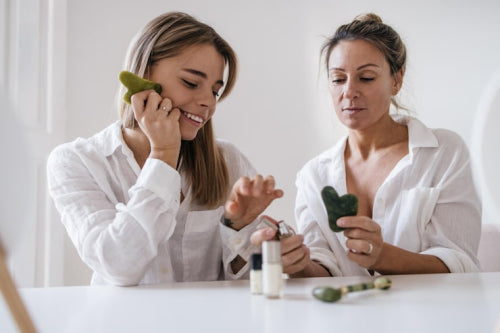
Quick Listen:
Picture this: You're standing in the cosmetics aisle, surrounded by shelves of shimmering palettes and bold lipsticks, but instead of grabbing the first thing that catches your eye, you're squinting at the fine print on the back. Parabens? Sulfates? What about phthalates? The days of blind trust in beauty products are over. Today's consumers armed with smartphones and a healthy dose of skepticism are demanding more from their makeup and skincare. They're not just after flawless coverage; they want formulas that won't sabotage their health or the planet. This seismic shift toward clean beauty isn't a fad it's a fundamental reimagining of an industry worth billions, and it's only gaining momentum.
In a world where ingredient scandals make headlines and sustainability tops shopping lists, our deep dive into Clean Beauty Explained: The Shift Toward Non-Toxic Cosmetics uncovers how this movement is transforming routines, reshaping brands, and challenging old norms. At its core, clean beauty promises products free from harmful chemicals, rooted in transparency and ethics. Yet, as we'll explore, its meaning morphs across borders, fueling a market that's exploding with opportunity and not without its pitfalls.
Many women feel trapped by makeup that hides flaws but risks irritation and hidden toxins. This daily choice weighs heavily, dimming confidence over time. Liht Organics invites you to embrace beauty differently. With up to 90% USDA-certified organic ingredients, our vegan, cruelty-free products deliver vibrant color and gentle care, letting you glow with confidence, knowing your skin is nurtured, not compromised. Shop Now!
Decoding Clean Beauty: A Global Patchwork of Promises
Clean beauty sounds straightforward: cosmetics that prioritize safety, sustainability, and simplicity. But dig a little deeper, and you'll find it's anything but uniform. In Western Europe, the term is inextricably linked to green practices and environmental stewardship think recyclable packaging and ethically sourced botanicals that minimize ecological footprints. Consumers here aren't just buying lipstick; they're investing in a product's full lifecycle, from farm to flush. Contrast that with Asia-Pacific markets, especially Japan, where clean beauty hinges on "free-from" declarations. Shoppers zero in on the absence of irritants like synthetic fragrances or preservatives, with one in four Japanese consumers specifically seeking out items boasting environmental claims. Safety trumps all, often manifesting in innovative formats like refillable containers that cut down on waste while ensuring purity.
Over in the United States, the landscape gets murkier. With minimal federal oversight, brands wield broad latitude to label products "clean," sparking a boom in third-party certifications like those from the Environmental Working Group (EWG) or Leaping Bunny. Nearly half of U.S. clean beauty users have ditched a product in the past year over ingredient worries, underscoring a deep-seated demand for verifiable safety. This regulatory vacuum has birthed both innovation and skepticism, as retailers like Sephora roll out their own standards to guide bewildered buyers. Globally, these variations highlight clean beauty's chameleon-like quality: a promise tailored to cultural priorities, yet universally driven by a quest for authenticity. For brands like Liht Organics, which crafts organic, vegan, and cruelty-free makeup, navigating this patchwork means emphasizing universal appeals transparency above all.
The Explosive Growth: From Niche to Powerhouse
Don't let the buzzwords fool you; clean beauty is big business, backed by hard numbers that paint a picture of relentless expansion. The global clean beauty market clocked in at USD 6.32 billion in 2023, a figure that's set to balloon to USD 34.8 billion by 2032, propelled by a robust compound annual growth rate (CAGR) of 14.62% from 2024 onward. By 2024 alone, valuations had climbed to USD 7.11 billion, signaling an acceleration that's hard to ignore. What's stoking this fire? A potent mix of societal shifts, including women's surging workforce participation 57.4% in the U.S. as of 2019, per Bureau of Labor Statistics data which has amplified demand for convenient, health-aligned products.
Millennials lead the pack as the fastest-growing consumer cohort, their affinity for natural formulations outpacing even Gen Z enthusiasts. Skincare has long reigned supreme, capturing the lion's share in 2022, while powders dominated in form and women edged out other end-users. Distribution tells another success story: specialty stores are projected to command around 40% of the market by 2032, but e-commerce and big-box retailers are closing the gap, making premium clean options as accessible as your next Amazon scroll. North America continues to dominate as the regional powerhouse, with the U.S. and Canada setting the pace. Europe follows as the second-largest market, while Asia-Pacific emerges as the fastest-growing hub, led by established leaders like China and an increasingly influential Japan. This geographic spread highlights clean beauty's universal appeal, transforming local preferences into opportunities with global impact.
Social media supercharges this trajectory. Influencers, once dismissed as trendsetters, now serve as ingredient detectives, dissecting formulas with the precision of lab techs. A single TikTok teardown can catapult a indie brand from obscurity to sell-out status, as seen with Liht Organic's organic foundations, which blend seamlessly into everyday routines without compromising on ethics. It's a democratizing force, empowering consumers to vote with their carts and forcing legacy giants to pivot or perish.
Why It Resonates: Health, Planet, and the Human Cost
Beneath the glossy veneer, clean beauty's surge stems from profound concerns that transcend aesthetics. The cosmetics sector stands at an environmental precipice, where traditional ingredients wreak havoc across ecosystems and human bodies alike. Petrochemical-derived compounds, animal-sourced elements tied to deforestation, and heavy metal catalysts aren't just buzzkill terms they represent real threats like environmental pollution and bioaccumulative toxins that linger long after the rinse. Residual contaminants such as 1,4-dioxane and ethylene oxide, byproducts of manufacturing, further compound the risks, prompting a frantic scramble for alternatives.
This urgency is quantifiable: the natural ingredients market within cosmetics is barreling from USD 642 million in 2022 toward USD 1,095 million by 2030, as over 40% of shoppers now insist on plant-powered purity. Research underscores the momentum a sharp uptick in journal articles and patents on natural cosmetics from 2013 to 2023, paralleled by innovations in preservatives and solvents like Natural Deep Eutectic Solvents (NaDES) that solve stubborn formulation puzzles without synthetic crutches. Brands are heeding the call, swapping petrolatum for squalane from olives or sugarcane, and deploying biotech to craft eco-preservatives that extend shelf life sans sacrifice.
Liht Organics exemplifies this pivot, infusing shea butter and jojoba into vegan lipsticks that glide like silk while dodging the deforestation pitfalls of conventional butters. Certifications USDA Organic for sourcing integrity, Leaping Bunny for animal welfare aren't mere badges; they're lifelines of trust in a sea of claims. Peers like RMS Beauty, with its raw, unfiltered ethos, and ILIA Beauty, blending high-pigment performance with superfine powders, prove non-toxic needn't mean lackluster. These aren't outliers; they're harbingers of an industry awakening to the fact that beauty's true cost includes the health toll on users and the strain on our shared resources.
Navigating the Rough Edges: Transparency's Tightrope
For all its promise, clean beauty grapples with formidable headwinds that test even the most committed brands. Foremost is the transparency tangle: without ironclad global standards, "clean" remains a slippery slope. In the U.S., where regulations lag, greenwashing thrives companies touting vague "natural" labels that mask synthetic fillers. The EU's pushback, including a 2023 court ruling against "climate neutral" puffery and bans on misleading eco-claims, offers a blueprint, but enforcement varies wildly. Consumers, particularly in the UK where 65% decry opaque eco-statements, grow wary, demanding proof over promises.
Cost compounds the conundrum. Sourcing organic, traceable ingredients inflates production expenses, pricing Liht Organic's non-toxic palettes beyond impulse-buy territory. Smaller outfits bear the brunt, as economies of scale favor behemoths who can absorb premiums. Then there's the knowledge chasm: social feeds brim with half-truths, leaving shoppers to sift "clean" from clutter. Brands bridging this with QR-coded breakdowns or app-linked verifications, like blockchain-traced supply chains, forge ahead, turning potential pitfalls into loyalty levers.
Seizing the Surge: Pathways to Prosperity
Yet, amid these thorns bloom vast opportunities that savvy players are quick to pluck. The march to USD 34.8 billion by 2032 isn't mere hype it's a clarion call for innovation across categories. Skincare's dominance invites crossovers into haircare and fragrances, where clean scents from essential oils could disrupt synthetic stalwarts. International frontiers beckon: APAC's safety fixation pairs perfectly with refill tech, while Europe's sustainability mandate opens doors for zero-waste lines.
For Liht Organics, this means doubling down on millennial magnets affordable bundles that bundle ethics with efficacy, fostering repeat rites that cement brand devotion. Trust isn't transactional; it's transformative, converting one-time trials into lifelong alliances. As regulations tighten and tech like AI-driven ingredient scanners emerges, the barriers to entry for ethical upstarts lower, promising a more equitable arena where quality trumps quantity.
Looking Ahead: A Cleaner Canvas for All
The clean beauty revolution transcends trends it's a reckoning with what we owe ourselves and the earth. As PFAS scrutiny intensifies, per recent August 2025 insights, and biotech blooms with lab-grown actives, the horizon gleams with possibility. Brands like Liht Organics must balance scale with soul, ensuring growth honors their roots. For you, the discerning buyer, it's empowerment: each selection a stand for skin sans compromise, a planet preserved.
So, next aisle encounter, pause at those labels. Seek the seals, probe the provenance, and embrace the ethos. Clean beauty isn't just cosmetics it's conscience in color, proving that true radiance starts from within, and extends outward, unapologetically.
Frequently Asked Questions
How big is the clean beauty market and what's driving its explosive growth?
The global clean beauty market reached USD 6.32 billion in 2023 and is projected to explode to USD 34.8 billion by 2032, with a robust growth rate of 14.62% annually. This surge is driven by millennials leading the charge as the fastest-growing consumer segment, increased women's workforce participation (57.4% in the U.S.), and social media influencers acting as ingredient detectives who can catapult indie brands to viral success. The movement represents a fundamental shift where consumers demand health-aligned products that won't compromise their wellbeing or the planet's health.
What are the main challenges and risks associated with clean beauty products?
The biggest challenges in clean beauty include the lack of standardized global regulations, which allows for greenwashing where companies use vague "natural" labels to mask synthetic ingredients. Cost is another major hurdle, as sourcing organic, traceable ingredients significantly increases production expenses, making truly clean products more expensive than conventional alternatives. Additionally, there's a knowledge gap among consumers who struggle to distinguish legitimate clean products from marketing hype, though some brands are addressing this with QR-coded ingredient breakdowns and blockchain-traced supply chains for transparency.
What does "clean beauty" actually mean and why are the definitions different across countries?
Clean beauty refers to cosmetics that prioritize safety, sustainability, and transparency by avoiding harmful chemicals, but its definition varies globally. In Western Europe, clean beauty focuses on environmental stewardship with recyclable packaging and ethically sourced ingredients, while in Asia-Pacific markets like Japan, it emphasizes "free-from" formulations without synthetic fragrances or preservatives. In the United States, with minimal federal oversight, brands have broad latitude to define "clean," leading to third-party certifications from organizations like the Environmental Working Group (EWG) to help guide consumers.
Disclaimer: The above helpful resources content contains personal opinions and experiences. The information provided is for general knowledge and does not constitute professional advice.
You may also be interested in: The Science Behind Organic Makeup and Pregnancy: A Gentle
Many women feel trapped by makeup that hides flaws but risks irritation and hidden toxins. This daily choice weighs heavily, dimming confidence over time. Liht Organics invites you to embrace beauty differently. With up to 90% USDA-certified organic ingredients, our vegan, cruelty-free products deliver vibrant color and gentle care, letting you glow with confidence, knowing your skin is nurtured, not compromised. Shop Now!
Powered by flareAI.co
You May Also Like
-

Discovering Self-Love Through Clean Beauty: A Guide to Nurturing Your Inner and Outer Self
In the journey of self-love, every action, thought, and choice we make towards ourselves can be a powerful affirmatio...
-

The Science Behind Organic Makeup and Pregnancy: A Gentle Choice for Moms-to-Be
wp:paragraph Pregnancy is a wonderful and exciting journey that comes with added responsibilities of ensuring the ...
-
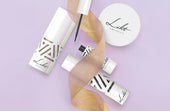
Liht Organics Black Friday: Enhance Your Beauty Routine with Vegan, Organic, and Natural Essentials!
As the holiday season approaches, there’s a sparkle in the air, and we at Liht Organics are thrilled to add a touch o...
-

Organic Makeup That Heals As It Conceals
Liht Organics Empowers Women With Only The Best For Their Beauty NeedsLiht Organics combines the best of both worlds:...
-
![[FEATURE] Liht Organics to debut at TFWA Asia Pacific show](//lihtorganics.com/cdn/shop/articles/1_1.png?v=1759328400&width=170)
[FEATURE] Liht Organics to debut at TFWA Asia Pacific show
‘Organic makeup that’s safe enough to eat’ — Liht Organics to debut at TFWA Asia Pacific show by Hannah Tan | 24 Apri...
-
![[FEATURE] The Singapore-based organic makeup brand is a first-time exhibitor at this year’s TFWA Asia Pacific Exhibition in Singapore in May 2025](//lihtorganics.com/cdn/shop/articles/2_1.png?v=1759328386&width=170)
[FEATURE] The Singapore-based organic makeup brand is a first-time exhibitor at this year’s TFWA Asia Pacific Exhibition in Singapore in May 2025
TFWA Asia Pacific preview: Liht Organics targets expansion in travel retail By DFNI Staff Writer The Singapore-bas...
-
![[FEATURE] Travel Retail Awards 2025 finalists - Best Make-up Product Color-Intense Liquid Lipstick – Liht Organics](//lihtorganics.com/cdn/shop/articles/4_e2f54f0f-fcd1-46e7-9990-fc9d29e35131.png?v=1759328382&width=170)
[FEATURE] Travel Retail Awards 2025 finalists - Best Make-up Product Color-Intense Liquid Lipstick – Liht Organics
Revealed: Travel Retail Awards 2025 finalists By Trbusiness Editor | Wednesday, 23 July 2025 15:21 TRBusiness is th...
-
![[FEATURE] Liht Organics targets expansion in travel retail](//lihtorganics.com/cdn/shop/articles/3_1.png?v=1759328346&width=170)
[FEATURE] Liht Organics targets expansion in travel retail
Organic makeup that’s safe enough to eat: Liht Organics targets expansion in travel retail By Laura Shirk Liht Organ...
-

[FEATURE] Gulf News: TikTok’s strawberry girl makeup trend: How to achieve that rosy glow inspired by Hailey Bieber
Berry, berry, strawberry, love strawberry, like BTS’s J-Hope, the band’s strawberry enthusiast once said. If only we ...
-

[FEATURE] Gulf Business Magazine : Liht-ing it up
Our founder, Nerissa Low was interviewed by Gulf Business, where she discussed her experience launching Liht, an orga...
-

[FEATURE] Daily Vanity: 11 local beauty brands owned by women – you’d be surprised how many of them started in their kitchens!
When we give a shout-out to homegrown beauty businesses, we aren’t just doing it for the sake of supporting local. Th...
-

[FEATURE] Entrepreneur ME : UAE-Based Liht Organics' Nerissa Low On Crafting An Organic Makeup Brand For The Skin-Conscious Consumer
As is the case with the origin stories of so many startups out there, Liht Organics came into being after its founder...
-
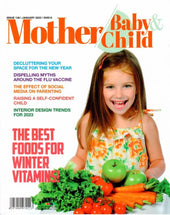
Mother, Baby & Child Editor’s Pick: Liht Organics Lights the Way
Excited to be the Mother, Baby & Child’s ‘Editors pick’ for their choice of Beauty brand.The article outlined the...
-
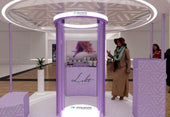
[FEATURE] EmiratesWoman - 8 Fabulous things to do in Dubai this weekend
by SARAH JOSEPHJANUARY 20, 2023Try the UAE’s first virtual reality makeup podium The popular VR-backed makeup exper...
-

Nerissa Low of Liht Organics On The Self-Care Routines & Practices Of Busy Entrepreneurs and Business Leaders
By Maria Angelova, CEO of Rebellious Intl.Date: 4 January, 2023Nerissa Low of Liht Organics On The Self-Care Routines...
-

Liht Organics: Meet the beauty brand that has caught the eye of the Royal Family of Bahrain
By Crystal Lee Digital Editor28 May 2021The world of clean beauty is, ironically, rather murky.That’s because the ter...
-

The latest luxury makeup and skincare drops, including serums, concealers, moisturisers and more
Allisa Noraini21 May, 2021It’s fine to splurge in the name of beauty. This new range of makeup and skincare drops are...
-

These SG Beauty Bosses Are Conquering The World Despite The Pandemic
First Singapore, then the US, China, Germany, Dubai, UK, South Korea, Malaysia, Hong Kong, Thailand, Australia… By...
-

Nerissa Low, Founder at Liht Organics
Written by Callum LaingPosted on December 26, 2020 10 min readNerissa Created Organic Makeup That Actually Improve...
-

Liht Organics – Makeup That Makes You
At Liht Organics, our mission is simple – to provide women (and men) with a safe experience when it comes to beauty s...
-

Why Should We Use Organic Makeup?
We cannot deny that cosmetics is one of our beauty essential item – it enhances our looks and conceals our flaws. Man...
-

Organic makeup and why your skin will love it: Liht Organics founder
By Jolene,July 27, 2020 |7 mins readOrganic make up in Singapore is a trend that is fast-catching on here as we becom...
-

[FEATURE] DC EDIT – Makeup & Confidence: Talking Self-love With Liht Organics’ Founder Nerissa Low
Makeup and confidence — the long, drawn-out fight that many of us have grappled with personally. I’m sure I’m not the...
-

[FEATURE] THE FEMALE CULTURE – I TRIED LIHT ORGANICS AND THIS IS HOW IT WENT
I’m a huge fan of makeup and I love testing out new products so I was pretty excited to get my hands on Liht Organics...
-

[FEATURE] SINGAPORE MOTHERHOOD – The Best Organic and Natural Skincare and Makeup for Pregnant and Breastfeeding Mums in Singapore
Pregnancy is a hormone-volatile period for women. One place where this makes itself seen and felt is on the skin. Som...
-

[FEATURE] AFTER CLINIC HOURS – 21 Back to Beauty Deals in Singapore (2020)
With spas and salons shuttered island wide for two months, I never thought I’d be this desperate for a good old’ Swed...
-

[FEATURE] KUL AL USRA MAGAZINE JUNE 2020
Choosing Pinks & Oranges this summer!Featured: Moisture Burst Lip Glaze in Pink Cupcake.
-
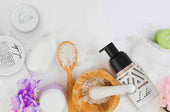
[FEATURE] Award-winning Organic Makeup Brand Liht Organics Gives Back to the Community & Environment During COVID-19
Singapore’s First Organic Makeup Brand with 100% Natural Makeup That Is Safe Enough to Eat Liht Organics promises org...
-

[FEATURE] COSMETICS DESIGN ASIA – COVID-19 ‘WAKE-UP CALL’: SINGAPORE’S LIHT ORGANICS SEES GLOBAL POTENTIAL AMID CLEAN BEAUTY CLAMOUR
Original article at: https://www.cosmeticsdesign-asia.com/Article/2020/06/26/Singapore-s-Liht-Organics-sees-globa...
-

[FEATURE] THE LIFESTYLE COLLECTIVE – BEAUTY SHOULD NEVER BE CRUEL
Date: June 24, 2020Author: Kristen Chen Liht (pronounced as light) Organics is a Singaporean organic makeup brand t...
-

[FEATURE] NÜYOU – 7 ONLINE PLATFORMS TO SHOP FOR CLEAN BEAUTY PRODUCTS
纯净美容(Clean Beauty)的美肤概念,再近几年来越来越受欢迎。随着消费者“爱自己”的美容意识逐步提升,对于用在脸上的所有物品、成分更为关注和讲究。以广义来讲,纯净美容主张使用“干净”成分和无毒配方,让肌肤的可能性损伤减到最小...
-

[FEATURE] COSMOPOLITAN MIDDLE EAST – 3 BENEFITS OF SWITCHING TO ORGANIC BEAUTY PRODUCTS THIS RAMADAN
By Cosmo – May 08, 2020Nerissa Low, founder of Liht Organics, shares the ultimate benefits of going organic this mont...
-

Nerissa Low of Liht Organics: “Seeing Light at the End of the Tunnel; 5 Reasons To Be Hopeful During this Corona Crisis”
Ely Weinschneider, Psy.D.May 8 · 9 min read …It shows us that everyone- whether we are rich or poor, regardless...
-

[FEATURE] AL MARA MAGAZINE APRIL 2020
-

[FEATURE] RetailME April 2020 – Liht Organics Stays Firm On Strengthening GCC Presence
-

[FEATURE] EMARAT AL YOUM NEWSPAPER – 27 MARCH 2020
English Translation:In spring and summer days, women love to have very light makeup in terms of color and texture, ...
-

[ARTICLE] WKND Magazine March 2020 – Know Your Organic Makeup
-

[FEATURE] AVIAMOST DUBAI – March/April 2020
English Translation:Lipstick with organic flowers. Thanks to the rich complex of natural ingredients, the lipstick...
-

[FEATURE] RUSSIAN EMIRATES (MAR/APR ISSUE)
Russian Emirates is a luxury lifestyle and fashion magazine covering information about the UAE, fashion, beauty, j...
-

[FEATURE] – KUL AL USRA MAGAZINE MARCH 2020
GET THE LOOK!
-

[FEATURE] IMAGES Retail ME – Liht Organics Announces GCC-Wide Expansion
Rupkatha Bhowmick Mar 10, 2020 The plan is to reach 75 Liht Organics retail touchpoints by June-July 2020 and touch...
-

[FEATURE] BABY & CHILD SPRING 2020 – NATURAL BEAUTIES
-

[FEATURE] AWQAT DUBAI – Liht Organics: The First Premium Organic Makeup Brand
ENGLISH TRANSLATION:Liht Organics – The First Premium Organic Makeup Brand Liht Organics, a premium organic beauty ...
-

[FEATURE] FRIDAY MAGAZINE – THE RETRO EYELINER LOOK
-

[FEATURE] MOTHER BABY & CHILD – VANITY ESSENTIALS – THE BEAUTY EDIT
-

[FEATURE] Masala! Magazine February/March 2020 Issue – Beauty Debut: Liht Organics
-

[Feature] – TimeOut Singapore – The Best Local Beauty and Skincare Brands In Singapore
For full article, click here.
-

[FEATURE] KUL AL USRA MAGAZINE – LIHT UP YOUR WORLD WITH LIHT ORGANICS
[ENGLISH TRANSLATION]Liht Up Your World With Liht OrganicsThe First Premium Organic Makeup Brand To Debut In The Mi...
-

[FEATURE] SINGAPORE TATLER – 9 Local Beauty Brands You Should Know Of
-

[FEATURE] nüyou August 2019 Issue – 15 Faces To Watch
-

[FEATURE] HONEYCOMBERS – Local Beauty Gurus: Singapore Beauty Brands You Need To Know About
-

[FEATURE] The Wellness Insider – Seeing The Liht With Founder Nerissa Low
-

[FEATURE] 联合早报 (LianHeZaoBao) – Women Entrepreneur Awards 2019 Coverage
-

[FEATURE] THE STRAITS TIMES Life – Clean beauty with a Singapore heart
-

Romantic Organic Makeup Looks for Valentine's Day: Tips, Tricks, and Product Picks
Valentine's Day is the perfect occasion to embrace the beauty of organic makeup. At Liht Organics, we believe in the ...
-
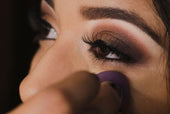
Enhance Your Eyes: A Guide to Eyeliner for Every Eye Shape with Liht Organics
Welcome to the Liht Organics blog, where we believe in celebrating the natural beauty of every eye shape. Today, we'r...
-
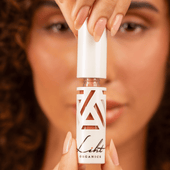
How to do makeup with only lipstick?
At Liht Organics, we believe in the power of clean beauty and the artistry of makeup. Makeup is more than just enhanc...
-

How to Clean Your Makeup Brushes in 6 Simple Steps
Cleaning your makeup brushes may seem like a tedious task, but it's an essential part of your beauty routine. Not onl...
-

Makeup Tips to Help You Look Your Most Flattering on Virtual Meetings!
After more than 2 years of work-from-home arrangement, and possibly hundreds of zoom calls and Google meet virtual me...
-
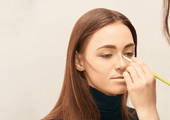
Learn How to Contour with This Simple Guide for Beginners
Want to take your makeup to the next level? Try contouring to achieve a more defined or sculpted look à la the Kardas...
-
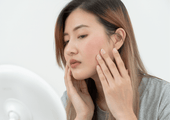
Essential and Easy Makeup Tips for Sensitive Skin
Living with sensitive skin conditions like eczema, psoriasis, and more is already not an easy feat. Throw in makeup t...
-
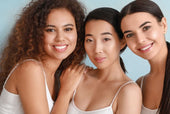
Raising Your Vibration: A Liht Organics Guide for Empowerment This International Women's Day
wp:paragraph As International Women's Day (IWD) approaches, it serves as a powerful reminder of the journey towards s...
-

The Beauty of Going Bare: Why Sleeping with Makeup is a No-No
Have you ever had one of those nights where you're too tired to clean off your makeup? You might believe, "Skipping...
-

Breast Cancer Awareness: Empower Your Beauty with Liht Organics Makeup
During October, we observe Breast Cancer Awareness Month as a way to unite and bring attention to breast cancer whil...
-

The Hidden Dangers of Carmine in Makeup Colorants: Embracing Healthier and Vegan Options
Makeup has become an integral part of our daily routines, allowing us to express our unique beauty. However, as we pr...
-

How can I ensure that my makeup products are organic and won't harm my skin?
When it comes to makeup, it’s important to be mindful of what you’re putting on your skin. With so many products on t...
-
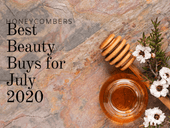
[FEATURE] HONEYCOMBERS – BEST BEAUTY BUYS IN JULY
by Nicole NithiyahWhat’s hot in our beauty hit list: Honest thoughts and top beauty stories we’re swooning over. As w...
-

Liht Organics Introduces Exclusive Gift Sets: Enhance Your Beauty This Festive Season!
As the holiday season approaches and the year draws to a close, Liht Organics is thrilled to present two enchanting g...
-

Get Spooktacular with the Best Halloween Makeup Ideas using Liht Organics' All-Natural, Vegan, and Cruelty-Free Cosmetics!
With Halloween just around the corner, it’s time to let your creativity shine and transform yourself into a spooky,...
-

Celebrating World Animal Day with Liht Organics: Embracing Natural Cruelty-Free Makeup
wp:paragraph As we observe World Animal Day, the team at Liht Organics takes great pride in honoring our pledge to...
-
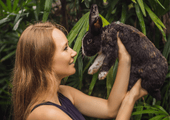
Reasons Why You Should Choose Cruelty-Free Cosmetics Instead!
With increasing exposés unveiling the ugly truth behind animal testing that goes on in the beauty industry, it is lit...
-

Celebrate Singles Day with Makeup That Empowers – 22% Off at LIHT Organics!
This Singles Day, treat yourself to beauty that goes beyond skin-deep. At LIHT Organics, we believe makeup is about s...
-

Preparing for the Cozy Beauty of Autumn: A Preview of Your Fall Look
As we bid farewell to the warm, sun-kissed days of summer, it’s never too early to start dreaming about the enchantin...
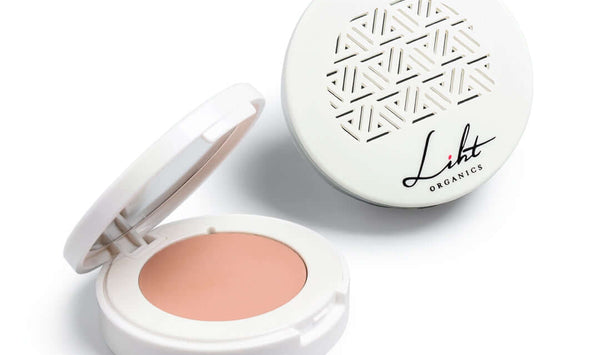
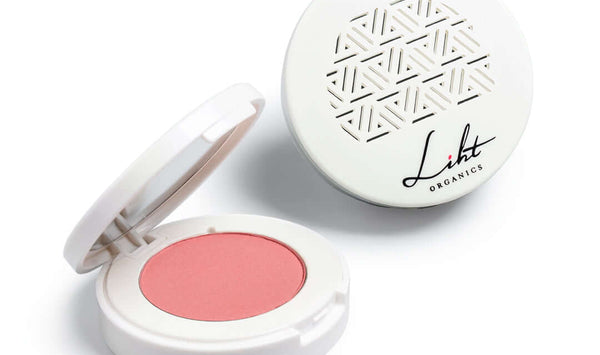
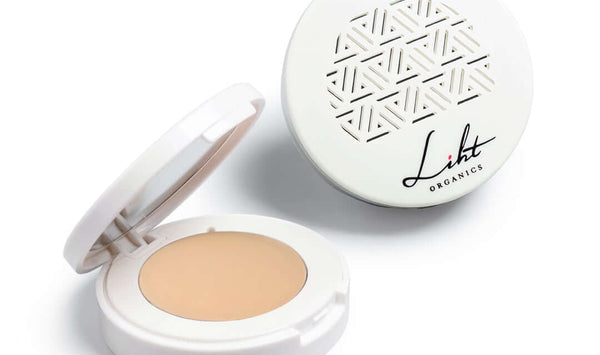
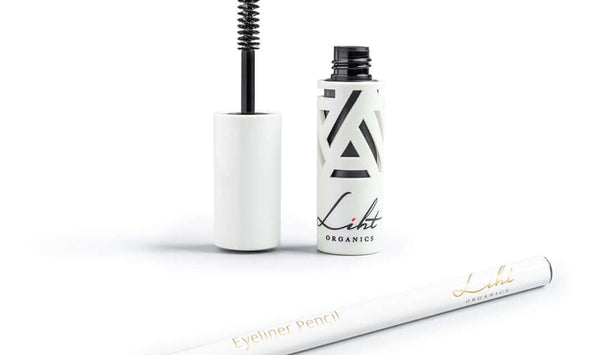
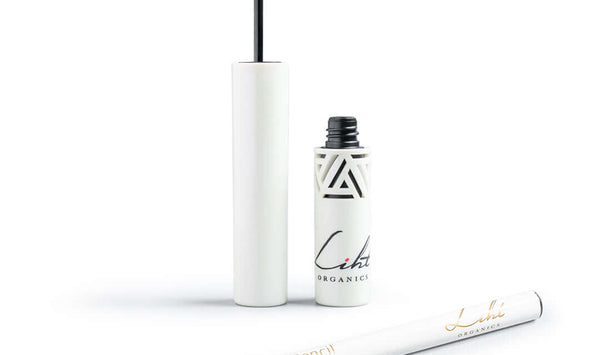
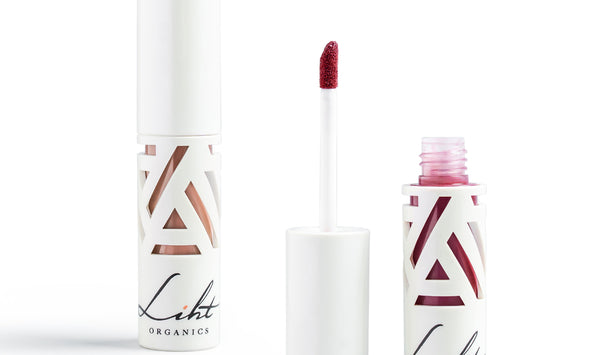
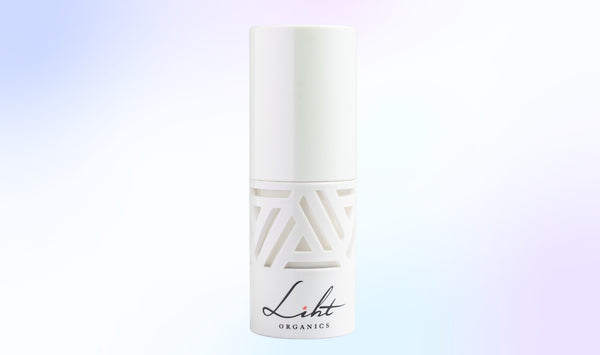
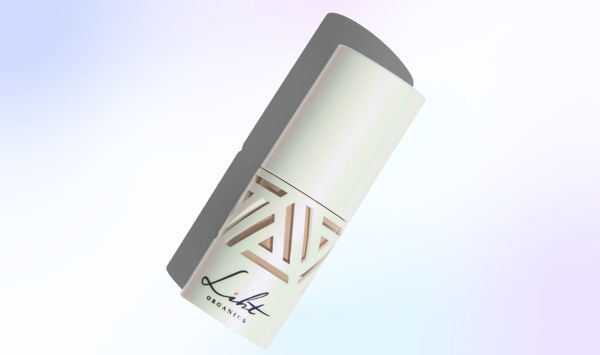
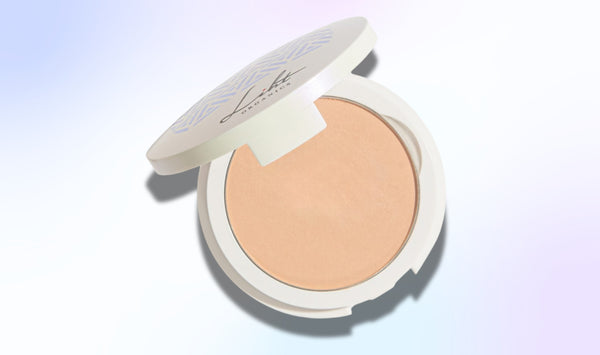
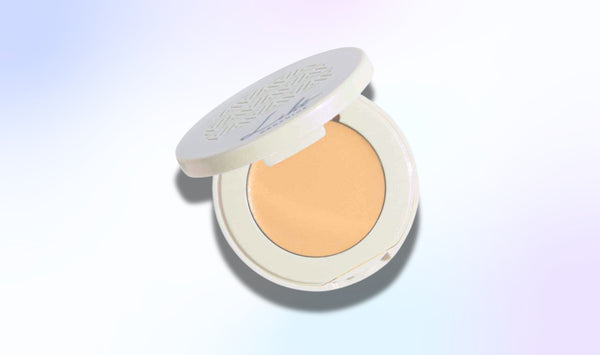
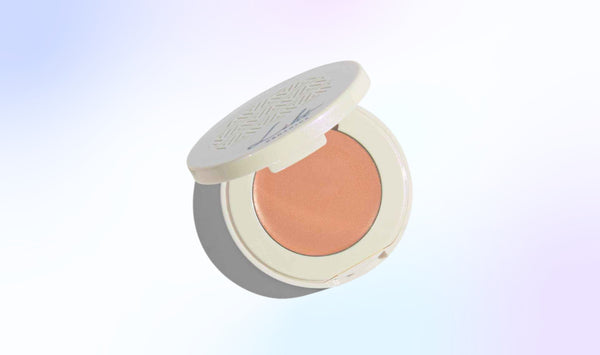
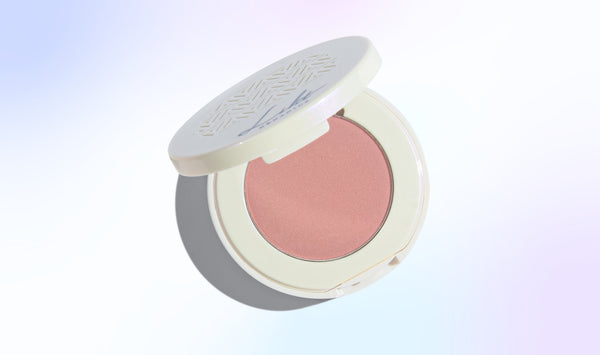
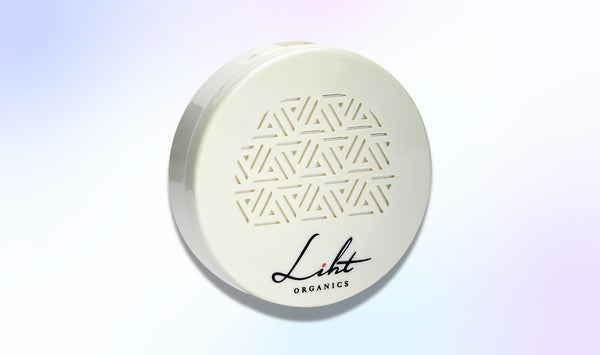
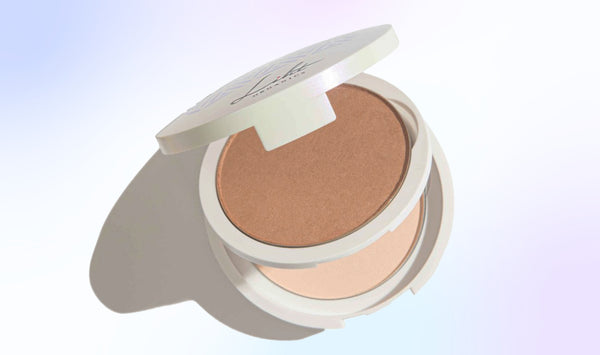
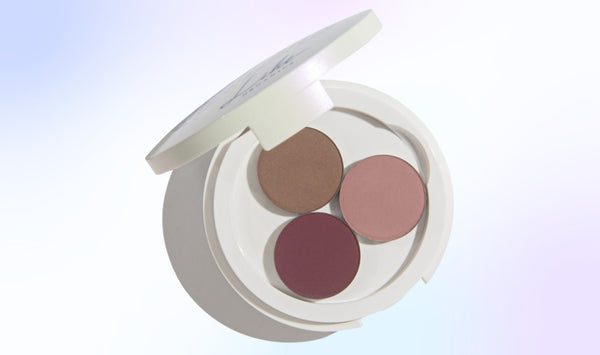
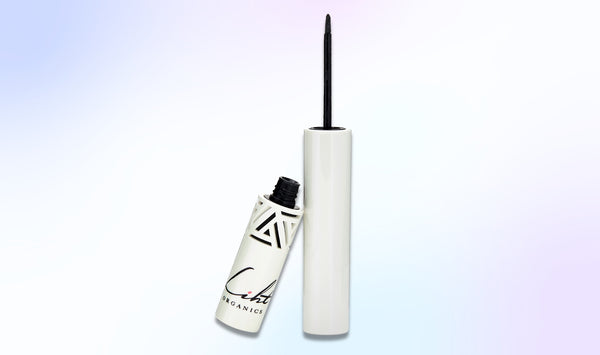
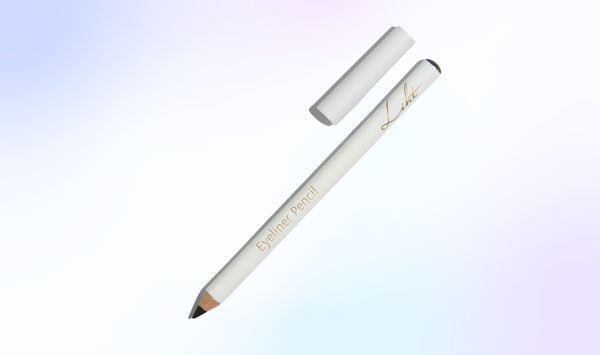
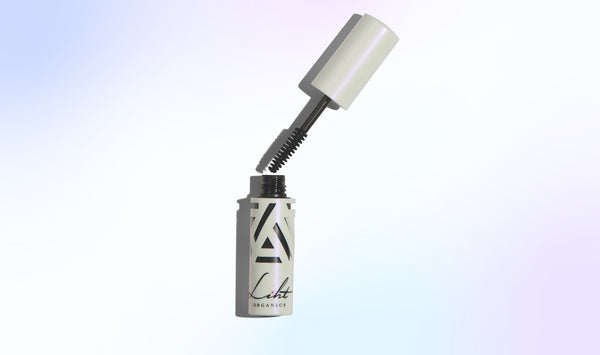
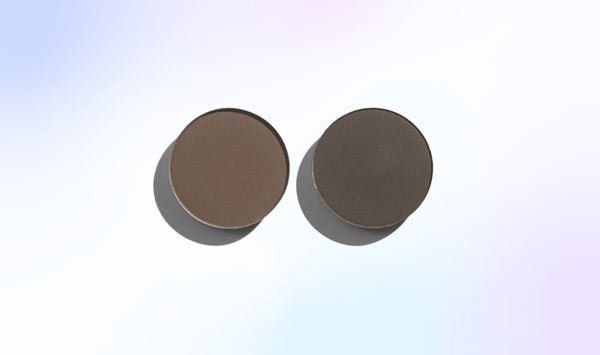
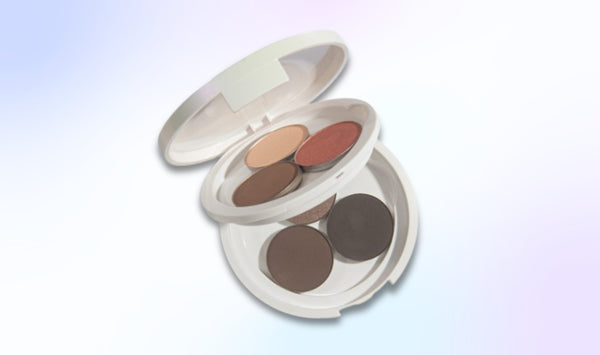
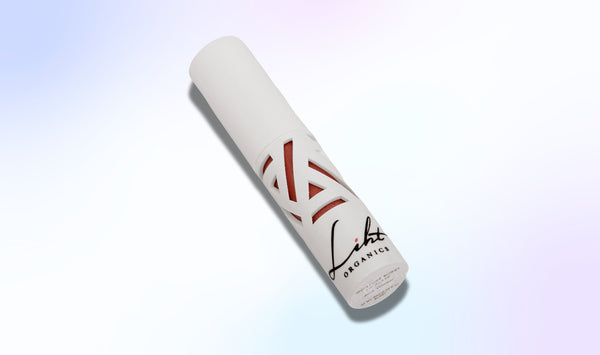
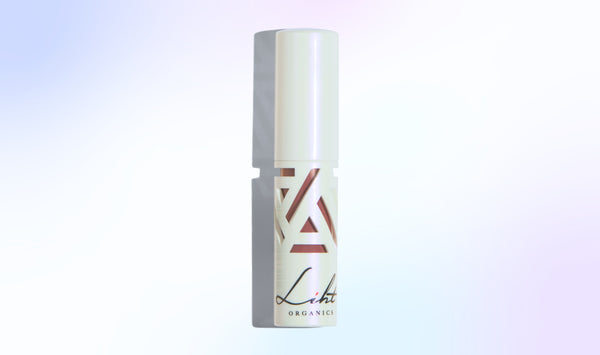
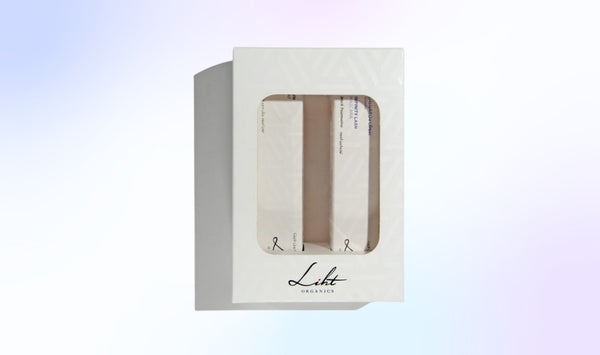
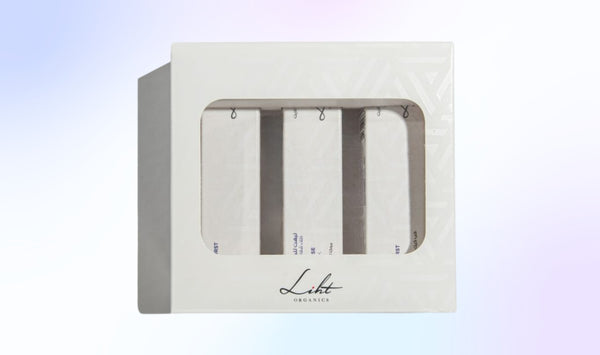
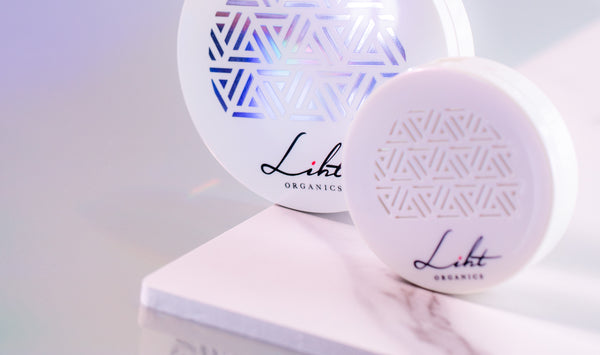
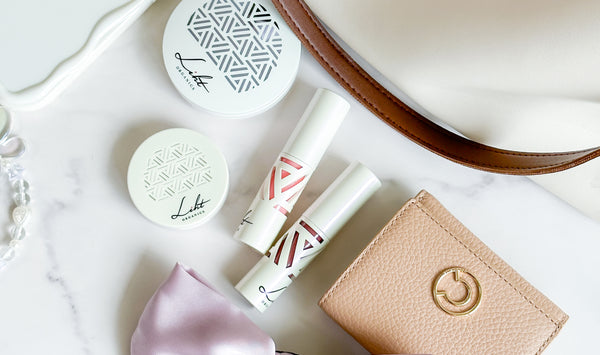
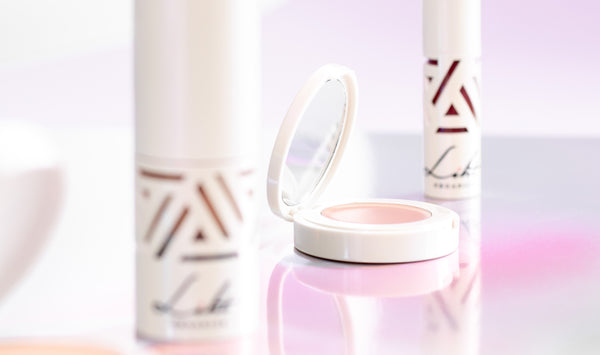




![[FEATURE] Liht Organics to debut at TFWA Asia Pacific show](http://lihtorganics.com/cdn/shop/articles/1_1.png?v=1759328400&width=170)
![[FEATURE] The Singapore-based organic makeup brand is a first-time exhibitor at this year’s TFWA Asia Pacific Exhibition in Singapore in May 2025](http://lihtorganics.com/cdn/shop/articles/2_1.png?v=1759328386&width=170)
![[FEATURE] Travel Retail Awards 2025 finalists - Best Make-up Product Color-Intense Liquid Lipstick – Liht Organics](http://lihtorganics.com/cdn/shop/articles/4_e2f54f0f-fcd1-46e7-9990-fc9d29e35131.png?v=1759328382&width=170)
![[FEATURE] Liht Organics targets expansion in travel retail](http://lihtorganics.com/cdn/shop/articles/3_1.png?v=1759328346&width=170)
































































